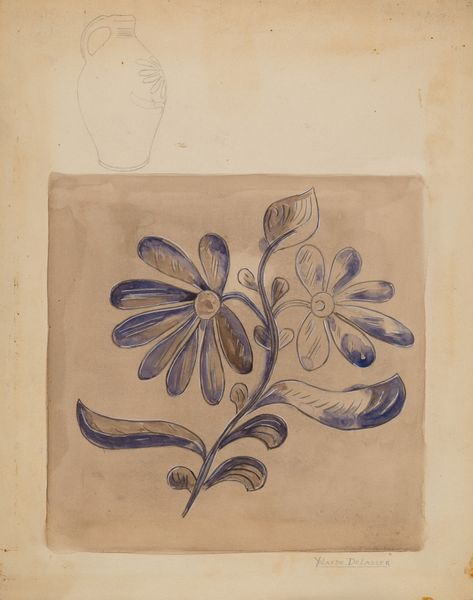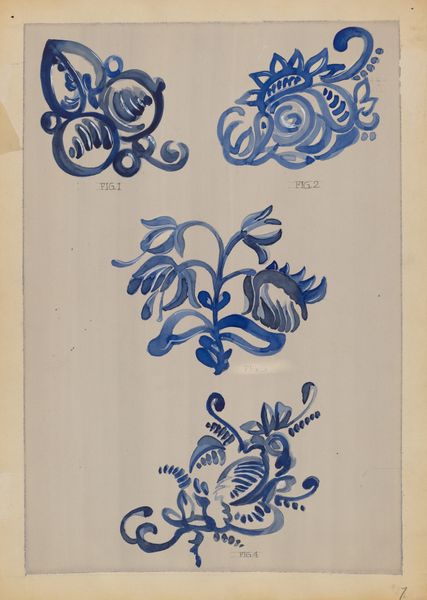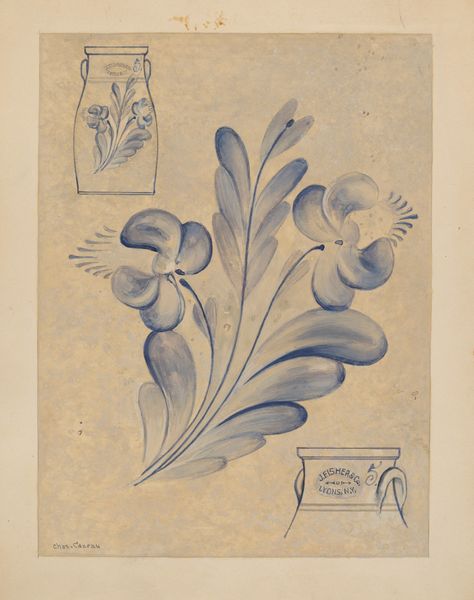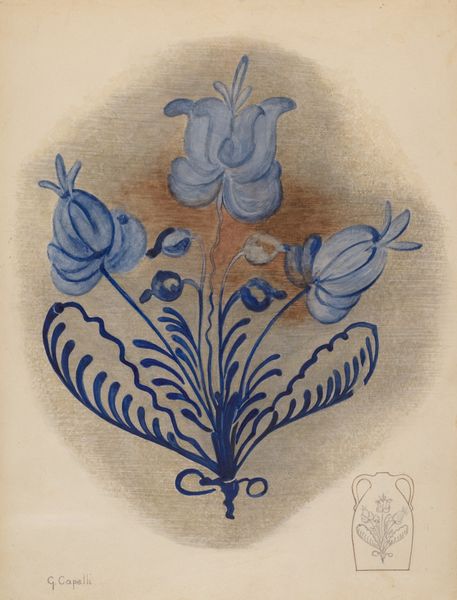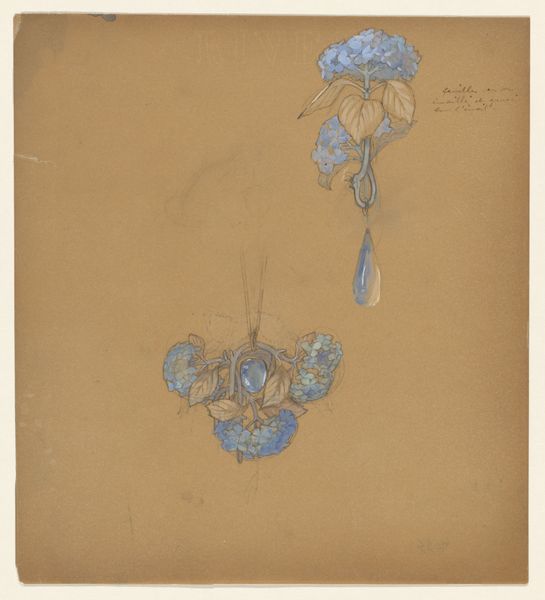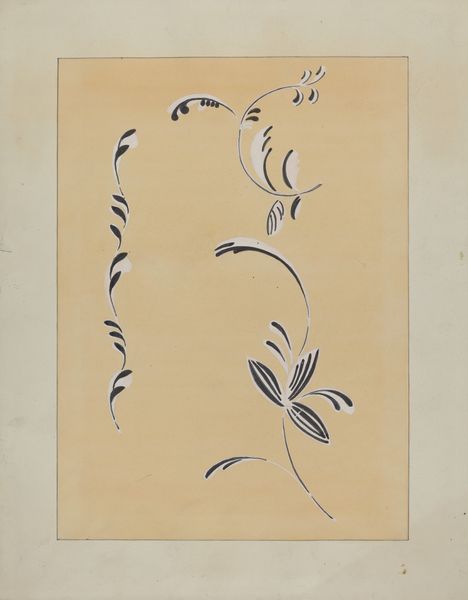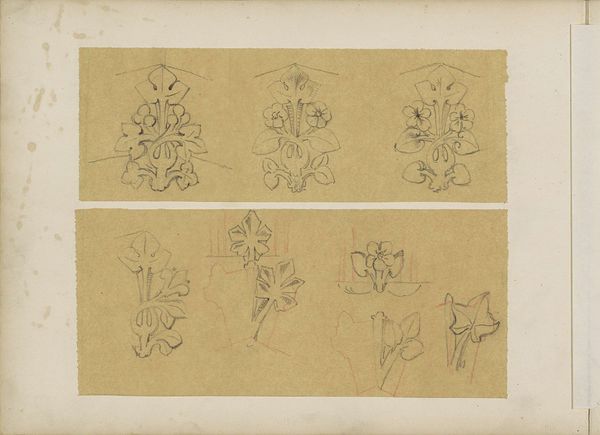
Dimensions: overall: 28.9 x 22.7 cm (11 3/8 x 8 15/16 in.) Original IAD Object: 11 1/4" High 6 1/2" Dia(top) 8" Dia(bot)
Copyright: National Gallery of Art: CC0 1.0
Curator: What a striking blue. The washes of color give it such a light, airy feel. Editor: Indeed. We're looking at "Jar," a watercolor and drawing created around 1936 by Yolande Delasser. The sketch of a jar hovers above loosely rendered flowers, a study of form and possibility. Curator: There is such deliberate composition, using minimal strokes to render volume. Look at the way Delasser uses varying depths of blue; some areas are almost opaque while others allow the paper's tone to peek through. How do you see it within the historical context? Editor: Well, given the era and Delasser's apparent focus, one cannot help but think of the changing roles for women in design and the decorative arts at that time. There was, particularly in urban centers, a burgeoning field for women artists, particularly in the design of domestic objects. Curator: Absolutely. The choice of watercolor is so relevant; it's accessible, immediate. It challenges hierarchies of value—drawing wasn't traditionally considered the "highest" art form, but Delasser finds expressive power here, transforming mundane subjects. It makes me think of labor too. This image could be linked to advertising or product design for pottery, but here it’s just line work and washes. Editor: And in that vein, observe the botanical references as related to a vessel; historically such objects have served not only a function in domestic life, but as an extension of the person through representation of floral patterns. The jar form is there to evoke meaning. Curator: The fact that we see the jar separate from its botanical rendering too… I'm particularly interested in that divide between intention and execution, like two ways of imagining it at the same time. Editor: Right, the dual presentation prompts one to see these flowers not just as ornamentation, but rather a commentary on our relationship to the vessel and the meanings of functionality. Curator: It all creates a tension that's captivating. Delasser’s attention to simple rendering here invites us to reconsider ordinary items. Editor: Exactly. Delasser asks us to ponder our perceptions of everyday objects as symbols that reflect and shape society.
Comments
No comments
Be the first to comment and join the conversation on the ultimate creative platform.

